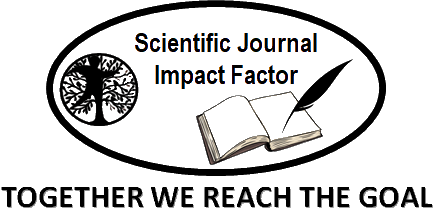Performance of Law Enforcement Officials in the Application of Article 33 of Law No. 11 of 2012 in the Vina Cirebon Case
DOI:
https://doi.org/10.58812/wslhr.v2i03.1116Keywords:
Juvenile Justice, Law No. 11 of 2012, Article 33, Diversion Process, Law Enforcement PerformanceAbstract
This study examines the performance of law enforcement officials in applying Article 33 of Law No. 11 of 2012 within the context of the Vina Cirebon case. Utilizing a qualitative approach, the research employs juridical normative analysis to explore the effectiveness and challenges faced by officials in enforcing the law. The findings reveal varying levels of understanding and awareness of Article 33 among law enforcement officials, impacting the consistency and effectiveness of its application. Key challenges identified include insufficient training and resources, discretionary decision-making, and difficulties in victim participation. Despite the potential benefits of diversionary measures, inconsistencies in their application and a lack of follow-up mechanisms hindered their effectiveness. The study concludes with recommendations for enhancing training programs, standardizing procedures, improving victim engagement, and increasing resources to support the successful implementation of diversion measures. This research contributes to a deeper understanding of the practical implications of legal provisions and offers recommendations for strengthening the juvenile justice system in Indonesia.
References
B. T. Nugroho and M. A. Priyambodo, “Upaya Diversi terhadap Anak yang Melakukan Tindak Pidana dalam Perspektif Keadilan Restoratif.” Sekolah Tinggi Ilmu Hukum IBLAM, 2023.
H. Abdurrachman and F. A. Sadewo, “The Model of Law Enforcement for Juvenile Delinquent in the Process of Investigation Based on Law Number 11 Year 2012 Concerning Juvenile Justice System,” J. Din. Huk., vol. 16, no. 1, pp. 48–55, 2016.
N. M. S. Hutapea, J. Damanik, D. K. C. Sitepu, and M. Saragih, “The Application of Diversion to Perpetrators of Criminal Acts Committed by Minors Based on Article 1 Number 7 of Law Number 11 of 2012 Concerning the Juvenile Criminal Justice System,” J. Soc. Res., vol. 2, no. 5, pp. 1815–1823, 2023.
A. Hasna and N. S. P. Jaya, “Implementation of Corruption on Law Enforcement in the Criminal Justice System in Indonesia,” IJCLS (Indonesian J. Crim. Law Stud., vol. 5, no. 2, pp. 163–174, 2020.
A. Muliadi, “Peran Politik Hukum Dalam Penegakan Hukum Yang Berkeadilan,” J. Huk. Adil, vol. 2, no. 2, 2011.
A. Daly, “‘Article 33: Protection from Narcotic Drugs and Psychotropic Substances’, in A. Alen, J. Vande Lanotte, E. Verhellen, F. Ang, E. Berghmans, M. Verheyde and B. Abramson (eds), written by D. Barrett and P. Veerman,” Int. J. Child. Rights, vol. 24, no. 1, pp. 231–234, 2016.
N. S. Yuzikova and S. I. Khomiachenko, “CRIMINAL ANALYSIS OF THE LEGAL SUPPORT OF JUVENILE PREVENTION: NATIONAL, INTERNATIONAL AND FOREIGN DIMENSIONS,” Publ. House “Baltija Publ., 2023.
Y. Pan, “Critical Analyse of the Exceptions in Resorting to Restorative Justice When Children Come into Conflict with the Law,” Malaysian J. Soc. Sci. Humanit., vol. 8, no. 8, pp. e002428–e002428, 2023.
P. Varma and A. Singh, “An analytical approach to juvenile justice and rehabilitation measures under the juvenile justice act in India”.
M. Zainal, “IMPLEMENTASI DIVERSI BAGI ANAK DIBAWAH UMUR YANG MELAKUKAN TINDAK PIDANA BERDASARKAN KETENTUAN UNDANG-UNDANG NOMOR 11 TAHUN 2021 TENTANG SISTEM PERADILAN ANAK,” Justness J. Huk. Polit. dan Agama, vol. 3, no. 2, 2023.
T. Barutu, “SISTEM PERADILAN PIDANA ANAK: IDEALISME DALAM PENERAPAN DIVERSI YANG SEPENUHNYA,” Coll. Stud. J., vol. 6, no. 1, pp. 308–319, 2023.
E. Peppo, “A comprehensive review of the diversion of children in conflict with law from judicial proceedings in Albania: Assessing alternatives to traditional justice,” Eur. J. Econ. Law Soc. Sci., vol. 7, no. 3, pp. 1–12, 2023.
S. J. A. B. Tobing, “The Diversion Program Implementation Under the Juvenile Justice System Act in Indonesia: What Works, What Does Not?,” Restor. J. Indones. Probat. Parol. Syst., vol. 2, no. 1, pp. 46–60, 2024.
D. Delyana, S. R. Putri, Z. D. Lolita, and A. U. Hosnah, “The Influence of the Child Criminal Justice System in the Implementation of Criminal Sansction For Undereges Who Permit Criminal act,” Act. Yuris J. Huk., vol. 3, no. 2, 2024.
A. Alhakim, B. Siahaan, and E. Febriyani, “Implementasi Diversi terhadap Anak yang Berkonflik,” Leg. Spirit, vol. 8, p. 59, Apr. 2024, doi: 10.31328/ls.v7i2.5057.
W. A. S. Adnyana, N. L. G. Astariyani, and I. N. Bagiastra, “ANALISIS YURIDIS PENGATURAN SYARAT PELAKSANAAN DIVERSI PADA TINGKAT PEMERIKSAAN DI PENGADILAN DALAM SISTEM PERADILAN PIDANA INDONESIA,” J. Komun. Huk., vol. 10, no. 1, pp. 25–36, 2024.
A. H. Sanjaya, A. E. Meliala, and N. M. M. Puteri, “The Paradox of Child’s Diversion Policy in Conflict with the Law in the Indonesian Child Criminal Justice System,” J. Soc. Polit. Sci., vol. 6, no. 4, pp. 17–34, 2023.
N. Indradjaja and F. Nurhandy, “DIVERSION AS THE CASE RESOLUTION FOR CHILDREN IN CONFLICT WITH THE LAW WITHIN THE PERSPECTIVE OF LEGAL PSYCHOLOGY,” Awang Long Law Rev., vol. 6, no. 2, pp. 478–482, 2024.
D. Chanila and J. Buhori, “Examining the Benefits and Challenges of the Diversion Programme as a Mechanism to Enhancing Juvenile Justice Administration in Dar es Salaam, Tanzania,” HURIA J. OPEN Univ. TANZANIA, vol. 30, Apr. 2024, doi: 10.61538/huria.v30i1.1480.
N. Nashriana, D. R. Banjarani, M. S. Del Rosario, and V. Novianti, “Enhancing Restorative Justice in Indonesia: Exploring Diversion Implementation for Effective Juvenile Delinquency Settlement,” Sriwij. Law Rev., vol. 7, no. 2, pp. 318–334, 2023.
Downloads
Published
How to Cite
Issue
Section
License
Copyright (c) 2024 Sainul Hamid, Sufriaman Sufriaman, Andri Triyantoro

This work is licensed under a Creative Commons Attribution-ShareAlike 4.0 International License.























 Instagram
Instagram 